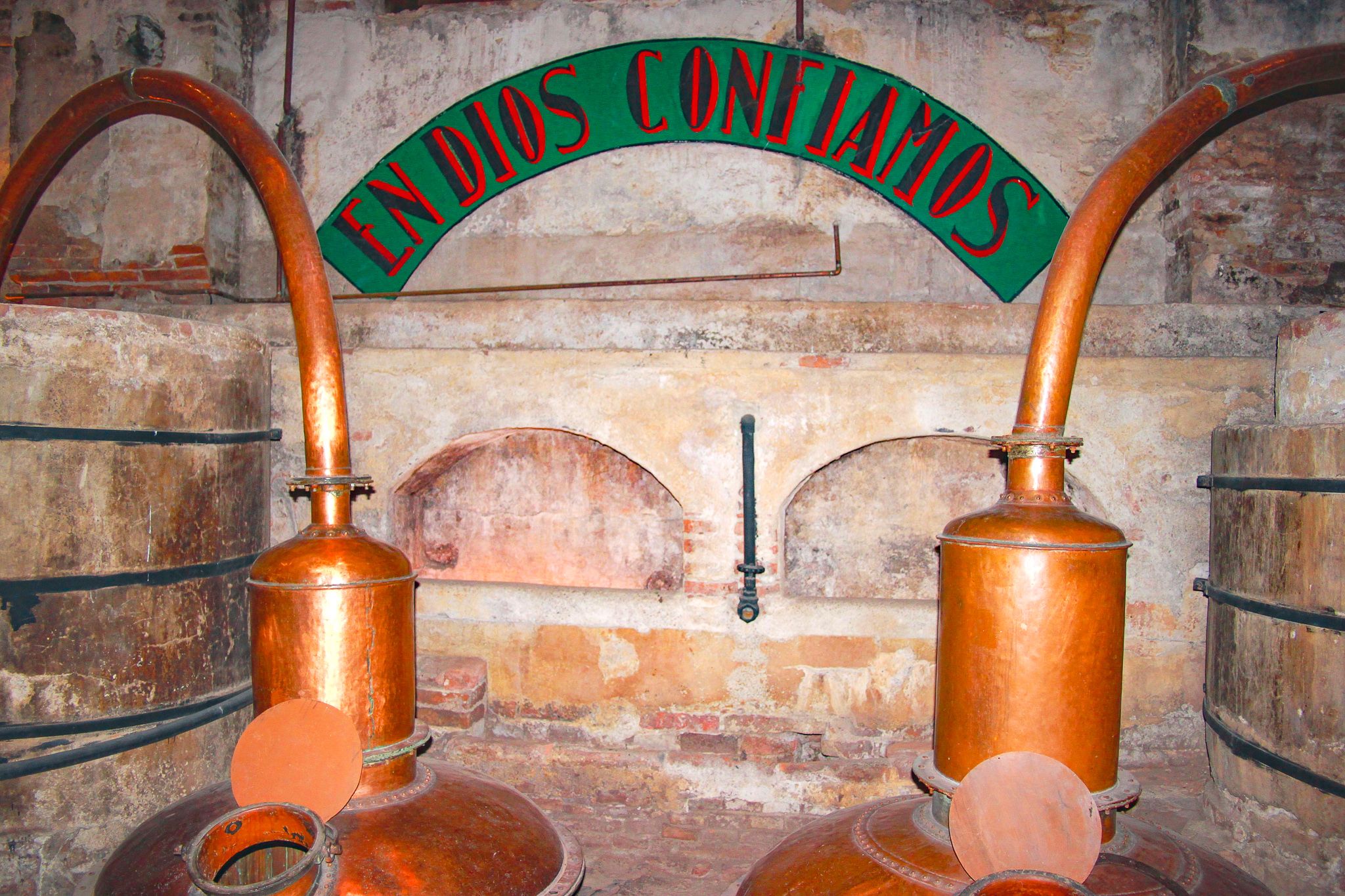ON THE TRAIL OF THE TEQUILA SLAMMER
After a night of tequila slammers you’d be correct in thinking you’ve imbibed a cocktail of compost and spent fuel isotopes, condensed in a rusty radiator by a moonshiner wearing a floppy sombrero and a sweaty moustache. Though, not all tequila is made this way.
In ancient times, the indigenous people of Mexico believed tequila to be a gift from the heavens. Having only used the leaves of the agave plant for such tasks as roofing their huts, one day, or so the legend goes, a lightning bolt burst from the clouds, striking a pile of piñas (the heart of the agave) and setting them alight. From this roasted pulp seeped goo emitting the most seductive aroma. Instantly smitten, they called it the nectar of the gods. And there was even better news to come: left to ferment the juice became “knock-out” gorgeous. Ever since those tentative, heady days, tequila has fuelled many a raucous night, the end of which is traditionally marked by a collective THUD. Hence the infamous line by George Carlin: ONE TEQUILA, TWO TEQUILA, THREE TEQUILA, FLOOR!
As our overland journey through the Americas neared the town of Tequila, the thought of sampling a shot of tequila I might actually appreciate, as opposed to one that just gets the job done, had a definite allure. I mean, would you pass Reims without dropping in for a glass of champagne? It was time to investigate further.
We turned our wheels in the direction of Tequila and, more specifically, its rival producer, the neighbouring town of Amatitán, situated a little further along the road. This being tequila we’re talking about we erred on the side of caution, choosing to visit a single producer, Herradura, a distillery of some repute. Soon enough we were whisking by fields of blue agave on the approach to Amatitán. The agave plant is a source of healing and nourishment and folk healers use most of it in their elixirs and salves. The plant takes seven to ten years to reach maturity; Herradura has twenty-five million plants at every stage of maturity, guaranteeing production for years to come.
At the entrance to Amatitán village a sign reads: “Bienvenido a Casa Herradura”. The company proclaims their product to be “El Mejor Tequila del Mundo”, which is just as well, for if I’m to wake up feeling as if I’ve been bludgeoned by a battalion of cavemen, I’d like to be able to say, “Man I feel rough. But it sure tasted good.’ I’ve never yet been able to say that about drinking tequila.
The first surprise at Herradura was at the entrance, which was guarded by a man with a pump-action shotgun and a bandolier of cartridges. This I deemed an excellent sign. Indeed, any liquor needing the protection of a pump-action shotgun and a stash of ammo must taste pretty damn good, right?
Beyond the guard the cobbled street leads to an office, where we paid our dues and met Mercedes, our guide. Mercedes took us past the hacienda, the setting for a number of legends and ghostly sightings. We were told about a network of tunnels beneath the Herradura property dug during the Cristero War, a period when the Mexican government attempted to violently subdue the power of the church. Aurelio López, owner at the time, risked life and limb to protect the local clergy, using tunnels to aid their passage to and from the hacienda. Sr López’s collaboration with the church meant he was forced to escape the property and never returned.
Like all good drinking stories the Herradura story began in the early 1800s with a priest, a certain Padre José Feliciano de la Trinidad Escobedo Romo - and try saying that after a few tequila slammers. He bought a hacienda, naming it La Hacienda del Padre, where he allegedly produced a tolerable vino mezcal. He deeded the business to his godchildren, the three orphaned Salazar sisters, who in turn managed the property with the aid of Felix López. Sr López took full possession of the property in 1870, registering it as a tequila-producing hacienda and at the same time renaming it Hacienda San José del Refugio.
Mercedes explained how the company had been owned and managed by seven generations of the same family. However, in 2007, the business was sold to the US corporation, Brown-Forman. Herradura is an impressive establishment covering several acres, a far cry from my image of how tequila is made.
After an hour’s tour came the moment of truth. A selection of Herradura’s produce was lined up on the table. I have to say it was only when we arrived at the bottle of Añejo that we moved away from the realms of lighter fuel. At last, the Añejo began to make drinking tequila interesting, which led us nicely to their top range Seleccion Suprema. The company’s own tasting notes described the Seleccion Suprema as, “… a complex balance of cooked agave, rich vanilla, toasted oak and dried fruit”. It is aged in the barrel for forty-nine months and has a 40% alcohol content. In 2012, it won the San Francisco World Spirits Competition Gold Medal.
Sat on the terrace outside their tasting room and shaded by a tree poking through the cobbles, I slid my glass across the table for another shot of Seleccion Suprema, happy to note how there wasn’t a single moonshiner wearing a floppy sombrero and a sweaty moustache anywhere to be seen.
(This article first appeared in OutdoorX4 magazine)







